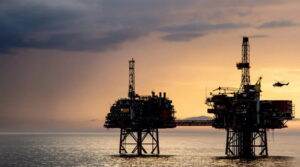Equinor ups its electrification ante offshore Norway
Norwegian state-owned energy giant Equinor has put measures in place to curb carbon emissions from the Norwegian Continental Shelf (NCS) by 160,000 tons of CO2 per year with power from shore. The company’s pursuit of decarbonization has been fortified with partial electrification of assets on Utsira High.

With the Sleipner field center, along with the Gudrun platform and other associated fields, now partly operating on power from shore, Equinor has confirmed that one of two operative gas turbines on the Sleipner A platform will gradually be shut down as a relevant transition to using power from shore. The other gas turbine will serve as a backup power source during a run-in phase. In the long run, Sleipner is expected to have the opportunity to operate on power from shore in full.
Kjetil Hove, Executive Vice President for Exploration & Production Norway, remarked: “The Sleipner area has delivered vast volumes of energy, created long-term ripple effects and contributed substantial values to the Norwegian society. With power from shore, we can develop new discoveries and resources from low-emission production, and gas export from the area can be maintained for a long time to come.”
The Sleipner field center was supplied with onshore power via a 28-km long cable from the Gina Krog platform on March 24. The Gina Krog platform was connected to onshore power in September 2023 via Johan Sverdrup. On the other hand, the Gudrun platform was connected to electricity through the existing cable to Sleipner on the same date.
Furthermore, the Sleipner fields are said to be among the largest gas producers in the North Sea and serve as a hub for gas transport to Europe. Since Norwegian gas plays an important role in the EU’s energy transition, the gas that would otherwise be burnt on the installations can now be utilized more effectively in Europe.
Related Article
-
Norway greenlights plan for partial electrification of Sleipner field
Exploration & Production
The overall investments in the project, which helps reduce Nox emissions of 700 tons per year, total NOK 1.08 billion (around $101.19 million). The Sleipner partnership exercised an option with Aibel in 2020 for an engineering, procurement, construction, installation, and commissioning (EPCIC) contract for the modification work on the Sleipner field center. NKT was awarded the contract to manufacture and lay the power cables.
The EPCIC contract, which has a value of about NOK 700 million (over $65.5 million), has contributed to 250 full-time equivalents at Aibel’s Stavanger office, offshore, and at the shipyard in Haugesund. ABB has undertaken substantial work as a sub-contractor while installing high-voltage equipment and updating the power control system.
Equinor has confirmed that all installations on the Utsira High are receiving power from shore, saving emissions of about 1.2 million tons of CO₂ per year. This is aligned with the plan for development and operation (PDO) for Johan Sverdrup Phase 2, which was approved by the Norwegian parliament in 2019.
Geir Tungesvik, Executive Vice President for Projects, Drilling & Procurement, commented: “Electrification is the most effective tool in our toolbox in our quest to achieve the national target of halving greenhouse gas emissions from Norwegian oil and gas production by 2030.”
Related Article
-
Electrification: Key to unlocking untapped oil & gas reserves and augmenting production
Exploration & Production
While the licensees in the Sleipner East license are Equinor (operator, 59.6%), Vår Energi (15.4%), PGNiG Upstream Norway (15.0%), and Orlen Upstream Norway (10.0%), the licensees in the Gudrun license are Equinor (operator, 36.0%), Vår Energi Norge (25.0%), OMV (Norge) (24.0%), and Repsol Norway (15.0%).
The Utsira High power grid includes Johan Sverdrup, Gina Krog, Sleipner, Gudrun (all operated by Equinor), Edvard Grieg, and Ivar Aasen (operated by Aker BP).









